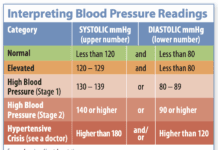Dietary fiber may help to control blood sugar in people with diabetes by supporting beneficial bacteria in the gastrointestinal tract, according to as study in Science. The human gastrointestinal tract harbors a diverse assemblage of bacteria—the gut biota. A select group of these bacteria produce chemicals called short-chain fatty acids (SCFAs) when they break down dietary fiber. These substances nourish the gut lining and help control inflammation and appetite. Some studies have linked a deficiency in SCFAs to diabetes.
In a study conducted in China, 43 people with type 2 diabetes were assigned at random to one of two diets. Both followed standard Chinese dietary guidelines, but one included larger amounts and a more diverse mix of fiber. After 12 weeks, the high-fiber group had lower average blood sugar levels than the standard-diet control group.
To understand why, the researchers had also performed a genetic survey of the participants’ gut biotas. Study participants with the greatest number and types of SCFA-producing bacteria achieved healthier weights and blood sugar levels. The findings suggest that fine-tuning the gut biota with fiber might help to develop customized diets for people with diabetes.






















